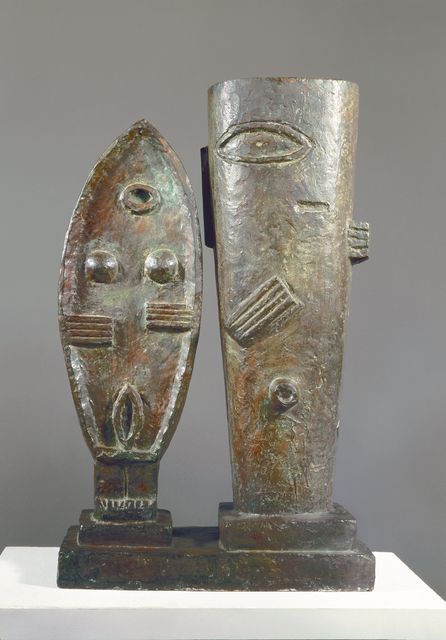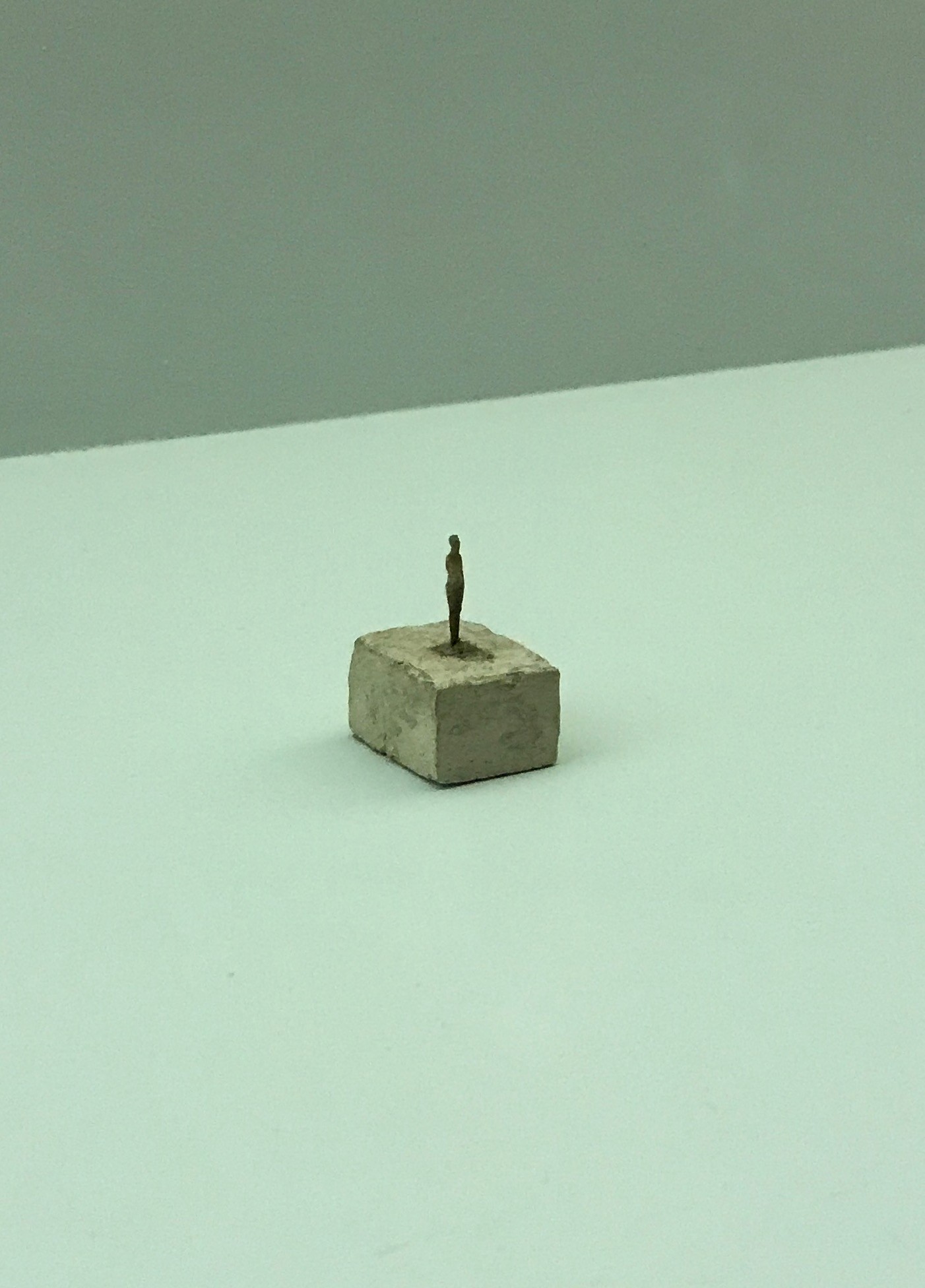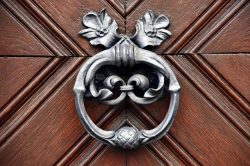Alberto Giacometti (10 October 1901 – 11 January 1966) was a Swiss artist who rose to prominence to become one of the most important sculptors of the 20th Century. Although in later life he developed a truly unique style, Giacometti’s work was particularly influenced by the burgeoning artistic movements of the early 20th century; particularly Cubism and Surrealism.
Around 1935, he reneged on his earlier Surrealist influences as a means of pursuing a more deepened analysis of figurative composition. As his career progressed, Giacometti’s art began to take on philosophical questions surrounding existential debates and the human condition. These themes continued to play a significant role in his life and work until the end of his career.
During the latter portion of his life, Giacometti wrote content and texts for periodicals and exhibition catalogues, while simultaneously recording thoughts and memories in personal notebooks and diaries. It was this self-critical nature, which led to great doubts about his work and abilities, that provided the motivating force for some of the most influential pieces of sculpture art produced in the 20th Century.
Contents
Early Life
Alberto Giacometti was born in 1901 in the town of Borgonovo, Switzerland, near the Italian border. He was the eldest of four children to the well-known post-Impressionist painter Giovanni Giacometti and his wife Annetta Giacometti-Stampa; and a descendant of Protestant refugees who escaped the inquisition by fleeing to the area. Being born into an artistic background, Alberto Giacometti was interested in art from an early age. As a youth, he attended the Geneva School of Fine Arts.
His brother Diego (1902–1985) went on to become a prominent sculptor, while another brother Bruno (1907–2012) would go on to become a well-respected architect. At the age of 13, Alberto made his first sculpture of his brother Diego, and it is said that he decided at that moment to dedicate his life to art. In 1922, Alberto moved to Paris to study under the sculptor Antoine Bourdelle, who was an associate of Rodin.
It was in Paris that Giacometti was exposed to Cubist and Surrealist influences, and swiftly began to experiment with them in his work. Through the 1930s, Alberto Giacometti came to be regarded as one of the leading Surrealist sculptors, keeping company with some of the most well-known artists at the time such as Miró, Max Ernst, Picasso, and Balthus.
Surrealism
The Surrealist movement began as a cultural movement in France in the early 1920s. It swiftly permeated into a writing and visual arts movement, examples of which the movement is best known. Surrealist artists developed techniques whereby the unconscious self could express itself, they painted unnerving and illogical scenes with expert precision, and they designed strange creatures from everyday objects as if in a dream.
However, despite being known for Surrealist art, the movement’s leader André Breton was explicit in stating that Surrealism was, above all, a revolutionary movement.

Many Surrealist artists and writers agreed with this assertion, regarding their work as an expression primarily of the philosophical movement, and with the resulting pieces being artifacts of it. Surrealism in art aimed to combine the contradictory conditions of dreams and reality into a single entity, and works often feature the element of surprise in the form of unexpected juxtapositions and non sequitur.
The movement developed out of the Dadaist activities of the First World War era, and the most important center of the movement was based in Paris; the hub for many of the major artistic and cultural movements of the 19th and 20th centuries. From the 1920s onward, Surrealism spread around the globe, where it eventually affected visual arts, literature, film, and music on a global scale, as well as political thought, political practice, philosophy, and social theory.
Giacometti's work of the 1920s and 1930s represents arguably the most important contribution to Surrealist sculpture. At this time, Giacometti explored societally uncomfortable themes derived from Freudian psychoanalysis, like sexuality, obsession, and trauma, and developed a variety of different sculptural objects. Many of these objects subconsciously encourage the viewer to physically interact with them; a concept which was very radical at the time.
Development of a Personal Style
Between 1936 and 1940, Giacometti produced many sculptures based on human forms, often the head and focusing on the gaze of his sitter. He preferred models he was close to and said himself that his brother Diego had sat for him 10 thousand times.
He was obsessed with creating sculptures exactly as he envisioned them in his unique view of reality, and often carved until they were as thin as toothpicks and could easily be held in one hand. While living in a Geneva hotel with his future wife Annette Arm, Alberto Giacometti produced sculptures that became smaller and smaller, and claimed that they seemed to shrink against his will.

It was in 1945, having returned to Paris after the war, that Alberto Giacometti experienced a breakthrough moment. As he left a cinema on the Boulevard Montparnasse, he experienced what he described as a “complete transformation of reality”.
Until that moment, his vision of the world had been photographic, and at that moment Giacometti realized that reality was in fact “poles apart” from photographic objectivity.
As he surveyed the heads around them and noted that they appeared isolated from space, the artist felt as if he were entering the world for the first time. It was this terrifying vision that left Giacometti finally able to sculpt larger figures, but as they became larger in size they became thinner in stature.
This was also true of his paintings, where continuous reworking often makes the subject appear isolated and extremely thin.
However, it was these elongated slender figures with oversized feet, for which Alberto Giacometti became renowned. Although he had accumulated some financial security by this point, he continued to live in his Paris studio rather than find more suitable accommodation. His rising fame and peculiar characteristics acquainted him with some of the most talked about writers and artists in the city; names like Jean-Paul Sartre, Simone de Beauvoir, and Pablo Picasso.
Despite his growing recognition, Giacometti still continued to prefer muses who were close to him, namely Annette and Diego. There also continued to be a particularly notable difference between the men and women of his sculptures. When asked why he treated male and female figures differently, Giacometti admitted that women seemed naturally to be more distant to him.
It was during this period that Alberto Giacometti produces some of his most iconic works, the most famous male sculpture being Man Pointing (produced in 1947), while arguably the most recognisable female figure is the extraordinary The Chariot (produced in 1950).
Giacometti experienced widespread fame in his lifetime, including a much-touted exhibition at the Venice Biennale in 1962 and a 1965 exhibition at the Museum of Modern Art in New York. He died in 1966 in Switzerland, and was interred nearby the parents who had instilled him with a love for art from a young age.

Legacy
Over the last decade, prices for Giacometti’s works have skyrocketed well above $100 million US Dollars, making him at present the most expensive sculptor of all time. His elongated figures first began to draw global attention and fame decades ago, but have benefited in recent years from a number of factors.
Primarily, clever management by the Paris-based Fondation Alberto et Anette Giacometti, the institution charged with overseeing Giacometti’s legacy, an industry boom in the top end of the market, and a growing interest from top collectors to pay large sums of money on sculpture.
On May 11 2015, Alberto Giacometti’s L'Homme au doigt (Man Pointing) went on the auction block at Christie’s in London, and reached a hammer pride of $126 million US Dollars ($141.3 million after fees). It instantly became the most expensive piece of sculpture in history.

Although original pieces of Alberto Giacometti sculpture are now by-and-large out of reach for the average art collector, the recent surge in popularity has brought his works closer to the public eye in the form of gallery exhibitions.
From May until September 2017, the Tate Modern in London exhibited a collection over 250 of Alberto Giacometti’s works. But if you were on the American continent and you missed out, fear not! The Guggenheim Museum in New York City will be hosting a collection of over 175 sculptures, paintings, and drawings by the artist between June 8 and September 12, 2018.
If you're interested in reading about another Art Deco Sculptor as popular as Alberto Giacometti you can check out our Dimitri Chiparus article






Leave a Reply
You must be logged in to post a comment.